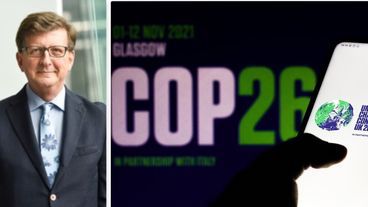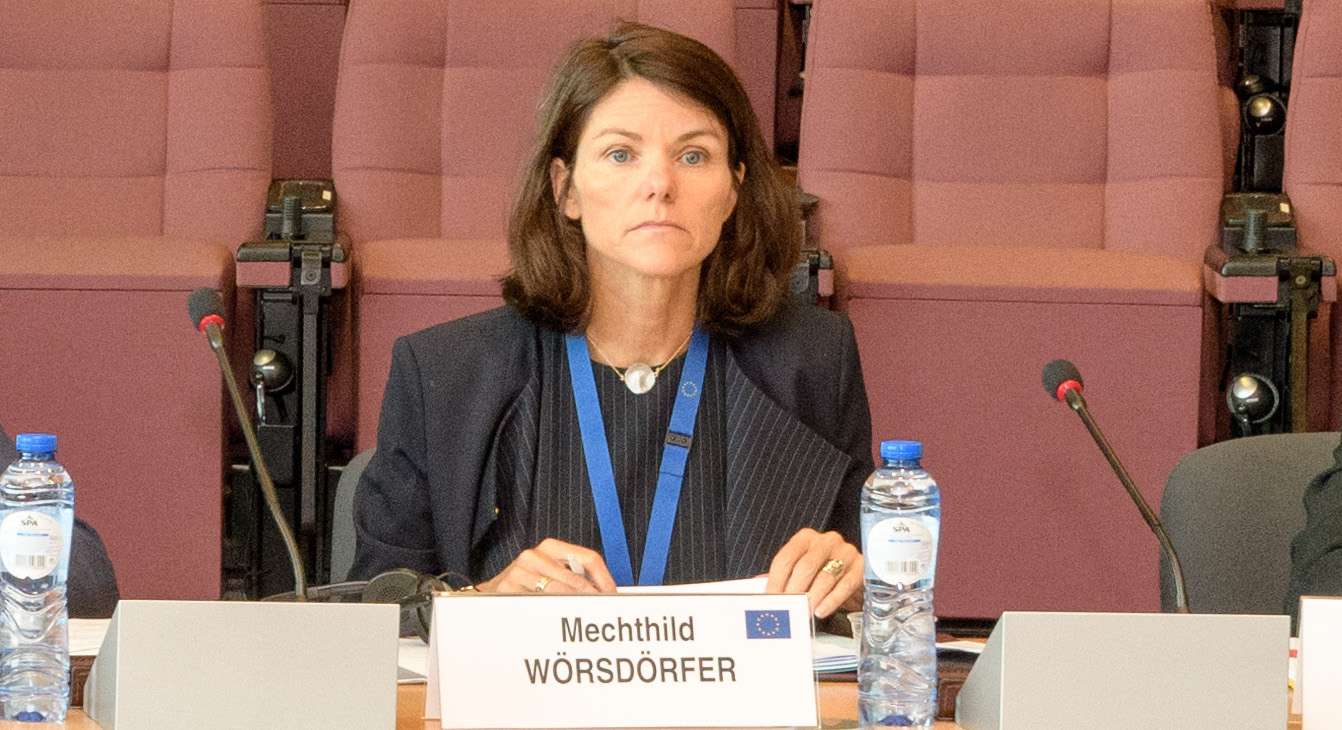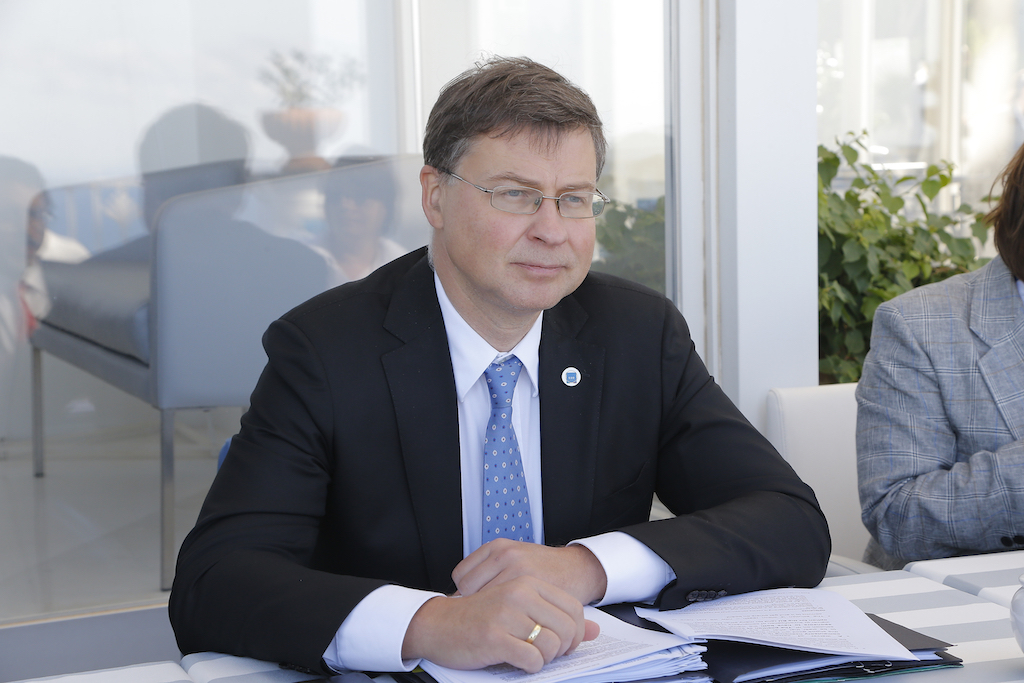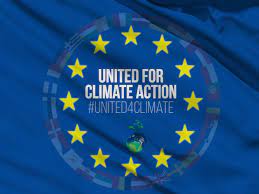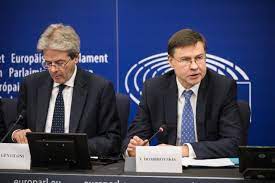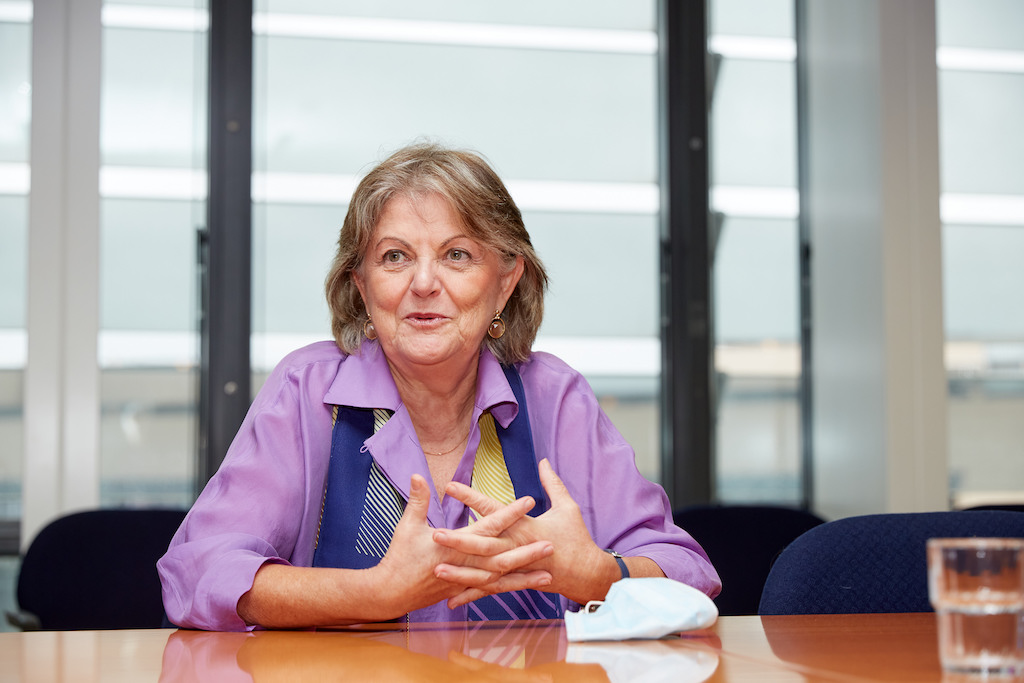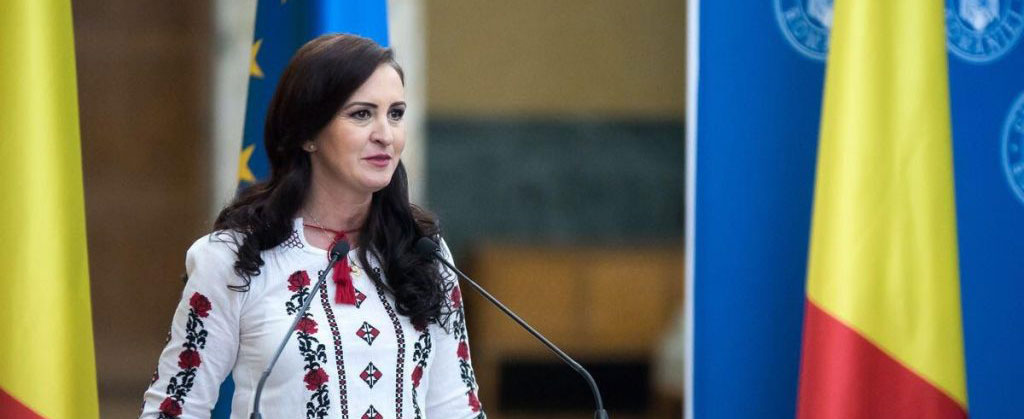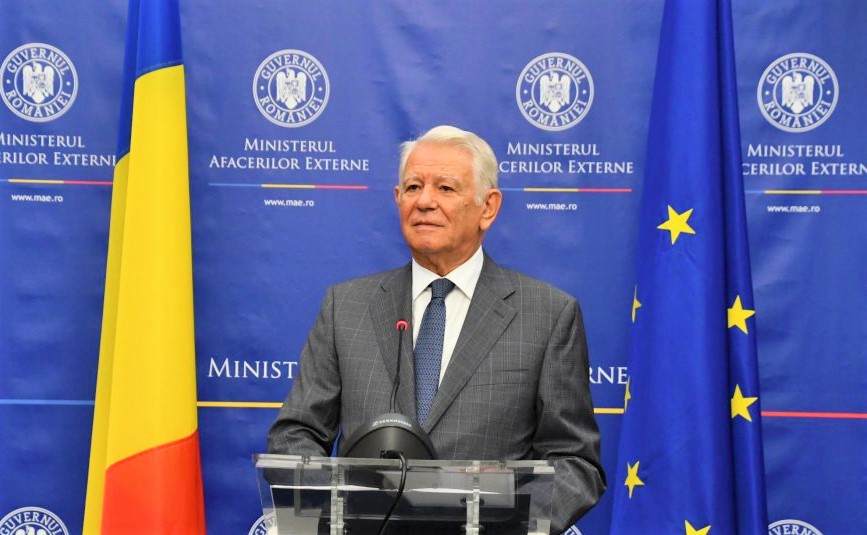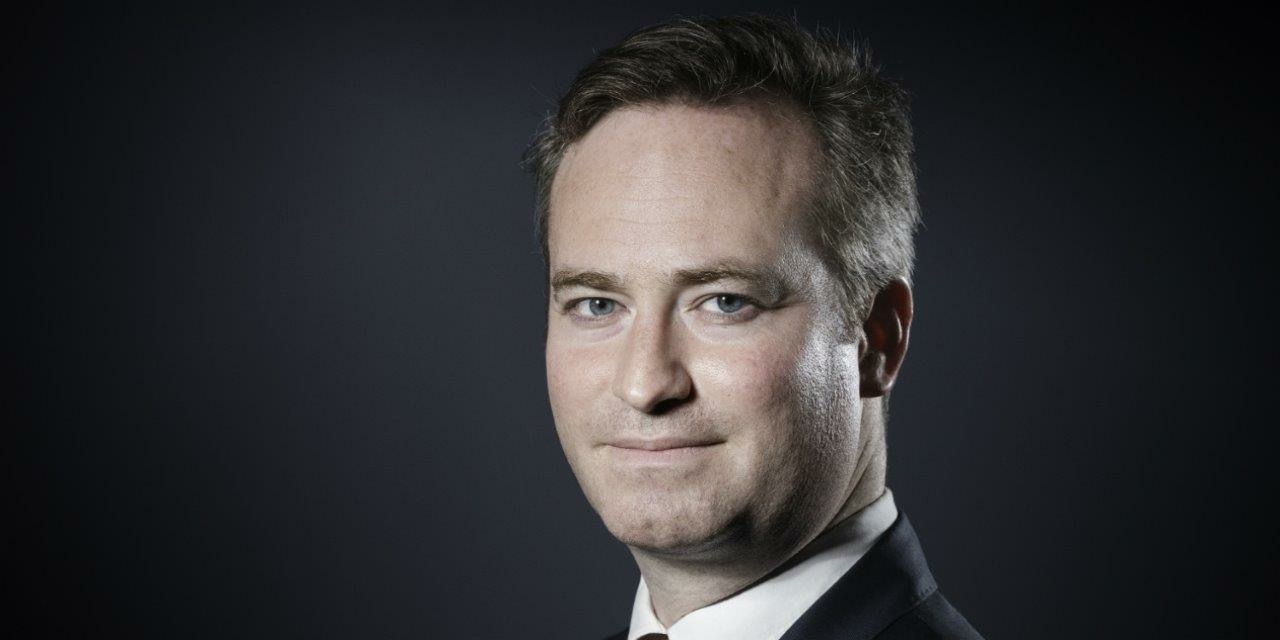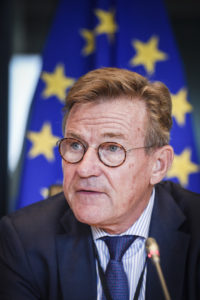
Foreword by Johan Van Overtveldt, MEP (ECR/N-VA)- Chair of BUG Committee at the beginning of our interview:
Climate change is a collective challenge. My party advocates and supports a sustainable transition that fosters competitiveness and welfare. We strongly believe that we need to achieve the necessary transitions in a growth scenario. We do not support nor believe in scenarios, which advocate less economic growth as a solution to climate change, or policies of sacrifice.
If we indeed want to achieve climate neutrality at EU level by 2050, we will need all technologies.
In my own country, there is a debate ongoing to shut down nuclear energy power plants and build gas plants instead. I find this quite absurd.
We have to keep an open mind; technology-neutrality is key. This goes for nuclear, but also for CCS/CCU.
I cannot help but noticing that in particular the left side is advocating ever higher climate ambitions, but at the same closing the door for some innovative solutions like nuclear, like CCS/CCU, like blue hydrogen, like gm technologies. This dogmatism will not help us at all in achieving climate neutrality.
We believe in progress by innovation, facilitates by government and policy.
In that regard, we also support carbon capture utilisation and storage.
We refer also to analysis of the International Energy Agency, the IPCC and the CCS Global Institute
As it is often the case, new emerging technologies are costly. This is also still the case with CCS/CCU. We need to boost / facilitate innovation so that the technologies become more and more commercially viable.
The Potential of CCS/CCU?
We strongly believe in the potential, opportunities and indeed the necessity offered by CCS/CCU technologies.
The Flemish Government refers for the first time to CCS/CCU in its policy framework.
If you allow me, I can highlight some clear examples from the nation I represent in the EP, Flanders. The ports play an important role in this regard, as strategic clusters of transport, industry and energy.
The Port of Antwerp, “With the project entitled Antwerp@C the partners aim to keep CO2 out of the atmosphere and so to make a significant contribution towards the climate objectives, thanks to applications for capturing and utilising or storing CO2, all within a relatively short time span and at reasonable costs. The project has the potential to reduce the CO2 emissions within the port (18.65 million tonnes greenhouse gas emissions in 2017) by half between now and 2030. This week Fluxys, Port of Antwerp, Total and Air Liquide submitted EU subsidy applications for taking the project one step further.” Cf1*
Steelanol at the ArcelorMittal plant in Gent, “we will transform the carbon-containing gases from our blast furnaces into bioethanol to be used as fuel for transportation or even for the production of synthetic materials. This will be the first industrial installation of its kind in Europe, producing 80 million litres of bioethanol annually.“ Cf2* . The project received support from the EIB.
North Sea Methanol Cf3* CCU Hub Gent. Demo project.
Also a clear link between hydrogen and CCS/CCU applications: as we will not be able to produce only green hydrogen, we will need blue hydrogen combined with CCS/CCU.
Support needed at various policy levels?
“Moonshot” , March 2019: Flanders invests the coming 20 y each year 20 mio euro (total 400 mio euro) in research/ innovation on new technologies, like CCS/CCU.
EU: CCS is eligible in principle under several programmes (eg European Structural and Investment Funds, Cf4*, certainly the RRF, Horizon, …)
This is an area, where the EU budget can finance research and pilot scheme and provide loan support. But the main investment must come from the private sector. And there is a huge tidal current against new investments in new fossil fuel plants, so also less demand in CCS.
Achieving net zero goals will be virtually possible without CCUS?
In a transition to net-zero emissions, the role of CCUS evolves and extends to almost all parts of the global energy system. In the IEA’s Sustainable Development Scenario
in which global CO2 emissions from the energy sector decline to net zero by 2070
the initial focus of CCUS is on retrofitting existing fossil fuel-based power and industrial plants and supporting low-carbon hydrogen production. By 2030, more than half of the CO2 captured is from retrofitted assets. Over time, the focus shifts to CO2 capture from bioenergy and the air for carbon removal – and as a source of climate-neutral CO2 for synthetic aviation fuels. In this scenario, around 60% of CO2 capture is linked to fossil fuels, and the rest is from industrial processes, bioenergy and the air.
CCUS is one of the two main ways to produce low-carbon hydrogen. Global hydrogen use in the Sustainable Development Scenario increases sevenfold to 520 megatonnes (Mt) by 2070. The majority of the growth in low-carbon hydrogen production is from water electrolysis using clean electricity, supported by 3 300 gigawatts (GW) of electrolysers (from less than 0.2 GW today). The remaining 40% of low-carbon hydrogen comes from fossil-based production that is equipped with CCUS, particularly in regions with access to low-cost fossil fuels and CO2 storage. CCUS-equipped hydrogen facilities are already operating in seven locations today, producing 0.4 Mt of hydrogen – three times as much hydrogen as is produced from electrolysers.
A faster transition to net zero increases the need for CCUS. CCUS accounts for nearly 15% of the cumulative reduction in emissions in the Sustainable Development Scenario. Moving the net-zero goalposts from 2070 to 2050 would require almost 50% more CCUS deployment.
CCUS grows and evolves on the path to net zero?
Underpinned by CCUS, carbon removal plays an important role in the net-zero transition. Technology-based carbon removal approaches are needed to balance emissions that are technically difficult or prohibitively expensive to eliminate. When net-zero emissions is reached in the Sustainable Development Scenario, 2.9 gigatonnes (Gt) of emissions remain, notably in the transport and industry sectors. These lingering emissions are offset by capturing CO2 from bioenergy and the air and storing it.
Direct air capture technologies have significant potential to accelerate the transition to net zero, but costs need to come down. Capturing carbon directly from the air and storing is an alternative to capturing it from bioenergy. Direct air capture plants are already operating on a small scale, but their costs are currently high. With further innovation, the availability of direct air capture technologies could offer an important backstop or hedge in the event that other technologies fail to materialise or have slower-than-anticipated pathways to becoming commercially viable.
Carbon removal is part of the net-zero equation?
CCUS facilities have been operating for decades in certain industries, but they are still a work in progress in the areas that need them most. CCUS has primarily been used in areas such as natural gas processing or fertiliser production, where the CO2 can be captured at relatively low cost. But in other areas, including cement and steel, CCUS remains at an early stage of development. These are the sectors where CCUS technologies are critical for tackling emissions because of a lack of alternatives.
CCUS is up and running in some sectors?
CCUS is up and running in some sectors, but lagging in the most critical onesInfrastructure to transport and store CO₂ safely and reliably is essential for rolling out CCUS technologies. The development of CCUS hubs – industrial centres that make use of shared CO2 transport and storage infrastructure – could help accelerate deployment by reducing costs. At least 12 CCUS hubs are in development globally – including in Australia, Europe and the United States – and many of them are linked to low-carbon hydrogen production. Norway’s Northern Lights project, a large offshore CO2 storage facility in the North Sea, could provide a solution for emissions from neighbouring countries.
Major CO2 emissions sources are within reach of potential storage. Our detailed analysis in this report of CO2 emissions from power and industrial facilities in the People’s Republic of China, Europe and the United States finds that 70% of the emissions are within 100 km of potential storage, a relatively practical and cost-effective range for transporting the captured CO2. In the United States, CO2 captured at existing facilities is transported an average of 180 km. But shorter distances can reduce costs and decrease infrastructure development times. The overall technical capacity for storing CO2 worldwide is vast, but detailed site-specific assessment is needed.
With ample storage available, success will hinge on getting the infrastructure right
We need to take urgent steps to ensure CCUS is available to contribute to net-zero goals. A major ramp-up of CCUS deployment is required in the next decade to put the global energy system on track for net-zero emissions. Governments have a critical role to play through policies that establish a sustainable and viable market for CCUS. But industry must also embrace the opportunity. No sector will be unaffected by clean energy transitions – and for some, including heavy industry, the value of CCUS is inescapable. Oil and gas companies have the engineering expertise, project management capabilities and financial resources to drive CCUS development and deployment.
Four high-level priorities for governments and industry would accelerate the progress of CCUS over the next decade:
1/ Create the conditions for investment by placing a value on reducing emissions and direct support for early CCUS projects
2/ Coordinate and underwrite the development of industrial hubs with shared CO2 infrastructure
3/ Identify and encourage the development of CO2 storage in key regions
4/Boost innovation to reduce costs and ensure that critical emerging technologies become commercial, including in sectors where emissions are hard to abate and for carbon removal.
Johan Van Overtveldt
MEP (ECR/N-VA)- Chair of BUG Committee
Cf4 https://ec.europa.eu/clima/sites/default/files/strategies/progress/docs/com_2019_566_en.pdf




